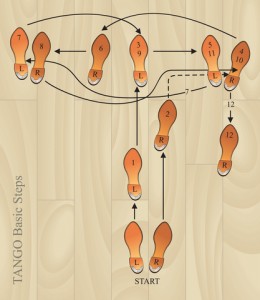
“We choose to go to the moon. We choose to go to the moon in this decade and do other things, not because they are easy, but because they are hard, because that goal will serve to organize and measure the best of our energies and skills, because that challenge is one we are willing to accept, one we are unwilling to postpone, and one which we intend to win, and the others, too.” President John F. Kennedy, September 12, 1962 in Houston, Texas USA
When I was a small boy (believe me, when I tell you that I was a very small boy) I saw President John F. Kennedy’s “Moon Speech” on TV. It was an awe-inspiring moment for me, for most Americans. Few people remember how unpopular and unsupported “space travel” was at that time. Most people didn’t believe it was even possible. It was something you could only imagine, or experience in science-fiction books and movies. Most politicians thought it was too ambitious, and unrealistic. JFK had an ace up his sleeve: A tenacious vision backed with passionate intelligence and conviction. The “Moon Speech” shifted American perception of space travel, and in turn, our sense of other endless possibilities.
As a working-class boy, I wasn’t permitted to be a free-thinker. I was imprisoned by the limitations dictated by class and ethno-centric discrimination: Hell on earth! I was constantly bombarded by messages from those who brandished absolute power, telling me/showing us, that nothing I dreamt would ever come true for me, or for any one of us.
JFK moved me to see, for the first time in my embryonic life, that anything is possible if you believe in the vision, if you are genuinely committed to making the vision come alive. You must commit without hesitation or doubt or excuse to retreat, to fallback. No matter what others say and do to destroy your dreams, JFK showed how vital it is to move forward and execute your vision with confidence. Defiance in the face of overwhelming odds.
We sometimes tend to romanticize great leaders like JFK, Martin Luther King, Jr. or Mahatma Gandhi. We focus on their vision and charisma, forgetting that these enlightened leaders are best remembered for getting things done. Getting things done is the real legacy of these enlightened leaders. We’ve all experienced managers, executives, and politicians with vision and charisma (who may even look the part) but do absolutely nothing. Vision and charisma are not enough, enlightened leaders possess a High EQ (emotional quotient) for getting things done with emotional intelligence.
Being an enlightened leader is not about espousing new rhetoric or reciting recycled jargon. Enlightened Leaders execute their strategic vision. Words and actions are consistently in alignment.
Contrary to the same old tune we’ve all heard before: Silence is not golden.
In the multicultural management consulting and learning services firm that I founded and led, De Candia International Corporation (1987-2007) we uncovered the “conspiracy of silence” in Corporate America whereby no one says anything to challenge or confront systemic deception and collusion, to keep the status quo intact. A conspiracy of silence engenders collusion, and collusion is the arch-enemy of change.
The message: Lead sans silence. Speaking-up makes a difference. Execute your vision with conviction. Lead with determination while remaining open to pluralistic perspectives.
Understand the value of speaking-up, taking a stand, with conviction. While no one else may believe in your dreams, it doesn’t matter what other people think, even when you feel the whole world is against you. If you feel that you can’t speak-up: ask yourself, “What messages am I receiving from within my organizational culture, telling me it’s not safe to speak-up.” The answer always lies within how the organizational culture is set-up. Change the set-up of the culture and you’ll see the behavioral change. Try this in small ways: participating in a meeting, working with a team on a project. You know that you believe in your vision, and you are willing to take the calculated risks to see that it happens, by whatever means necessary (without becoming the new Prince Machiavelli).
What matters most is what happens in the long run. JFK didn’t live to see his moon dream realized. Others, who were inspired by his vision, fulfilled his dream in 1969. No one accomplishes anything alone. Understand this: “Resilient conviction” is part of every enlightened leader’s behavioral profile.
Believe me when I tell you, I was rejected by everyone under the moon and sun, ridiculed as a politically incorrect ranting and raving lunatic (even by many of the people closest to me – my colleagues in other firms and practices). I was excluded, an out-cast by some organizations, who was said that I was conceptually and literally wrong about everything I conceived to be true. Yet my firm thrived for more than 20 years with impressive Fortune, Global, and Inc. 500 clients. Other management consulting firms interpreted my professional life as a contradiction (or just dismissed me for being a crazed, conflicted, Spanish-French Pisces).
Despite what fascist, authoritarian textbooks may have taught you, listen to your inner voice, see with your mind’s eye. Think about it: Are you flying your true colors? Are you saying what you believe? Or, are you just repeating what you been told is the proper company line. Great leaders are revolutionary not evolutionary, executing their visions with precision. Enlightened Leaders use their voice as a catalyst for action and change.
Come what may, when is the wrong decision, the right decision? When no one around you believes in doing the right thing, but you. Learn how to speak-up effectively. Challenge the powers that be. Storm the Bastille!
According to recent research from VitalSmarts: Silence Fails. Leaders can substantially improve their organizations ability to execute on high stakes projects and initiatives. Yes, you can break the code of silence on five astoundingly common yet mostly unspoken, undisclosed, and ignored problems that contribute significantly to almost all project and initiative failures.
Based on the VitalSmarts research, when an enlightened leader skillfully creates even a moderately safe environment, the likelihood of a project or initiative failing is reduced by 50%. When enlightened leaders effectively step-up, hitting schedule is 40% more likely, quality improves 60%, and the potential for project or initiative ending with strong morale and intact stakeholder relationships is 70% greater.
Based on the VitalSmarts study, the five crucial conversations most prevalent and most costly to lasting success are:
- Fact-free Planning: A project or initiative is set-up to fail when deadlines or resource limits are set with no consideration for reality.
- AWOL Senior Executives: Senior Executives (sponsors) provide no leadership, political clout, time, or energy to see a project through.
- Skirting: People work around the priority setting process. (You know, there’s one in every crowd, on every team, and more than one in every organization and family.)
- Project Chicken: Team leaders and members don’t admit when there are problems with the project, but instead wait for someone else to speak-up.
- Team failures: Team members are unwilling or unable to support the project.
Each brings with it a myriad of misses, cost over-runs which plague projects, initiatives, teams, organizations (and yes, dysfunctional co-dependent family relationships). The VitalSmarts key findings show that these problems are most likely caused by a high degree of interdependence among levels and functions. The organizational culture tends to be closed rather than open. Challenging norms, especially within a hierarchy, is the kiss of death. When these problems are not openly and skillfully discussed, projects and relationships fail miserably, significantly impacting what leaders, teams, and organizations can achieve.
Enlightened Leaders influence lasting success and achievements, the way we see ourselves and each other, causing us to re-think what we thought we knew, shifting our perceptions of things, the way we feel and act. Enlightened leaders shoot for the moon, and beyond.
So, what do you say and do? Let’s continue the conversation.
Marc Ortiz de Candia, Executive Partner, Vitalia Consulting


